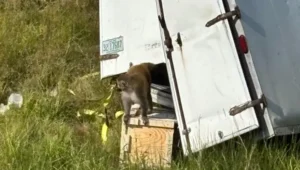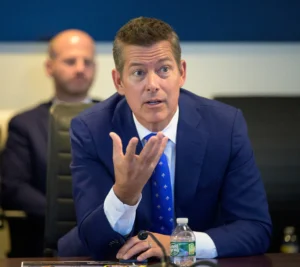A plan to guide the development of refueling and hydrogen supply infrastructures for medium and heavy vehicles
The federal agencies have launched the National Strategy for Zero-Emission Freight Corridors, aimed at guiding the development of hydrogen refueling and supply infrastructure for medium and heavy-duty vehicles until 2040, with the goal of facilitating the transition to zero-emission vehicles nationwide.
The United States is committed to decarbonizing freight transportation by adopting zero-emission medium and heavy-duty commercial vehicles and improving infrastructure, leveraging both federal and private investments. The objective is to achieve at least a 30% sales target for these vehicles by 2030 and 100% by 2040.
The strategy outlines four phases to prioritize, sequence, and accelerate infrastructure construction along major freight corridors and key transportation points. Initially, the focus is on funding zero-emission freight transport infrastructure in high-volume areas and short-distance operations, with plans to expand to long-distance operations and Class 8 vehicles over time. The phases are:
Phase 1: establishing priority axes based on freight volume, 2024-2027
During this phase, priority will be given to areas suitable for battery electric fleets, especially Class 3-7 vehicles engaged in return-to-base operations such as freight transport and deliveries. The aim is to develop transportation ecosystems within a 100-mile radius around major corridors and ports.

Phase 2: connecting stations along critical freight corridors, 2027-2030
The second phase will establish an extensive network of corridors connecting priority centers, expanding infrastructure construction beyond key states. Additionally, the introduction of the Department of Energy’s Clean Hydrogen Regional Centers is aimed at increasing the adoption of hydrogen fuel cell electric trucks by fleets.
Phase 3: expanding corridor connections by initiating network development, 2030-2035
In the third phase, priority centers will be expanded to include more ports and freight transportation facilities. The corridor network will extend nationwide, facilitating zero-emission freight transport along major east-west and north-south routes. Both battery electric and hydrogen fuel cell vehicles are expected to dominate during this phase, with infrastructure primarily supporting regional and short-distance operations.
Phase 4: achieving a national network by connecting regional corridors for ubiquitous access, 2035-2040
The final phase prioritizes the National Freight Transportation Highway System, supporting private investment to ensure widespread access to zero-emission freight transport infrastructure along corridors. Additionally, zero-emission freight transportation centers will be expanded to include truck parking areas catering to vehicles of all categories.
This strategy aims to adapt to changes in the economy, technology, market, and community needs. The Joint Office will periodically review the Strategy with inputs from the Electric Vehicles Task Force and requests for information. Additional opportunities for stakeholder engagement will be provided informally as needed.

The 2025 Capitol Christmas Tree tour kicks off by the hand of Knight-Swift
The nearly 3,000-mile journey of the U.S. Capitol Christmas Tree began with a special celebration at the Nevada Day Parade in Carson City. The month

A new study links traffic accidents to violations of the ELP regulation
A new study analyzed the relationship between traffic accidents and drivers who violate the English Language Proficiency (ELP) regulation. A new study analyzed the relationship

Clean Truck Deal: Judge Halts California Emissions Agreement with Truck Manufacturers
Clean truck deal and California emissions return to the center of the national debate after a federal court blocks enforcement of the Clean Truck Partnership, pausing requirements tied to zero-emission truck adoption while litigation continues.

Truck Transport of Live Animals for Research: Lessons from the Mississippi Monkey Incident
The transport of live animals for research is under renewed scrutiny after a truck carrying rhesus monkeys overturned in Mississippi, allowing several to escape. This article explains what went wrong, how these transports are supposed to operate, and what lessons the trucking industry can take away.

Halloween activities for truck drivers: take the fun on the road
To celebrate this holiday safely while keeping the fun alive, we’ve put together a list of activities truck drivers can do to embrace the spirit

Secretary Duffy unveils new measures to strengthen trucking safety and compliance
In a press conference, Duffy pledged federal effort to eliminate fraud and improve trucking safety standards. On the morning of October 31, U.S. Secretary of

You made some decent points there. I looked
on the net for more info about the issue
and found most people will go along with your
views on this web site.